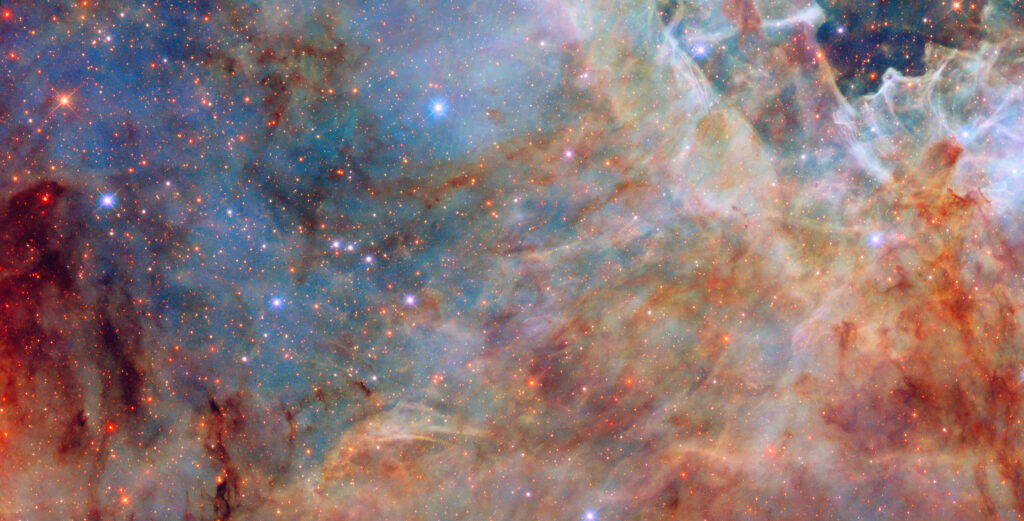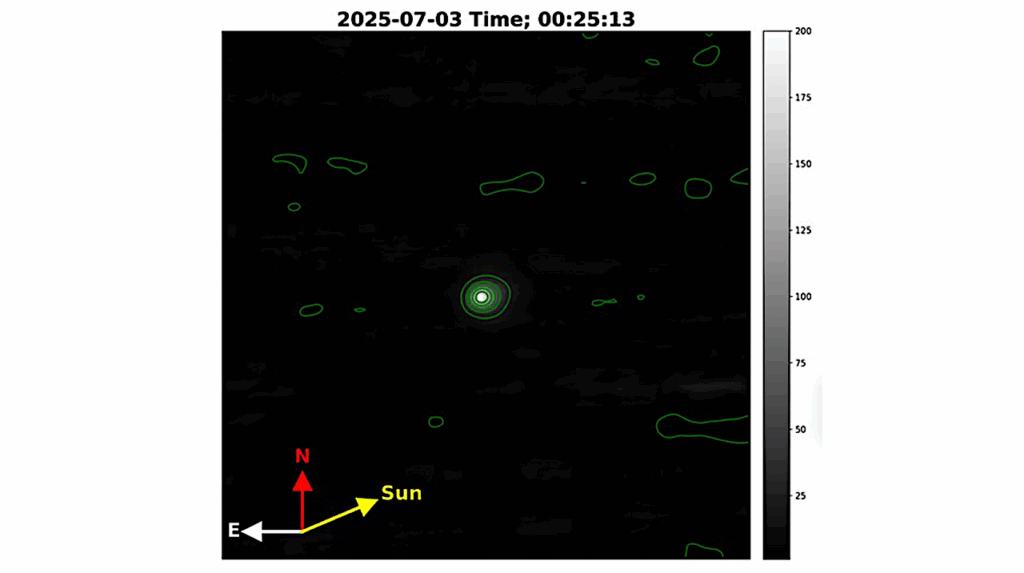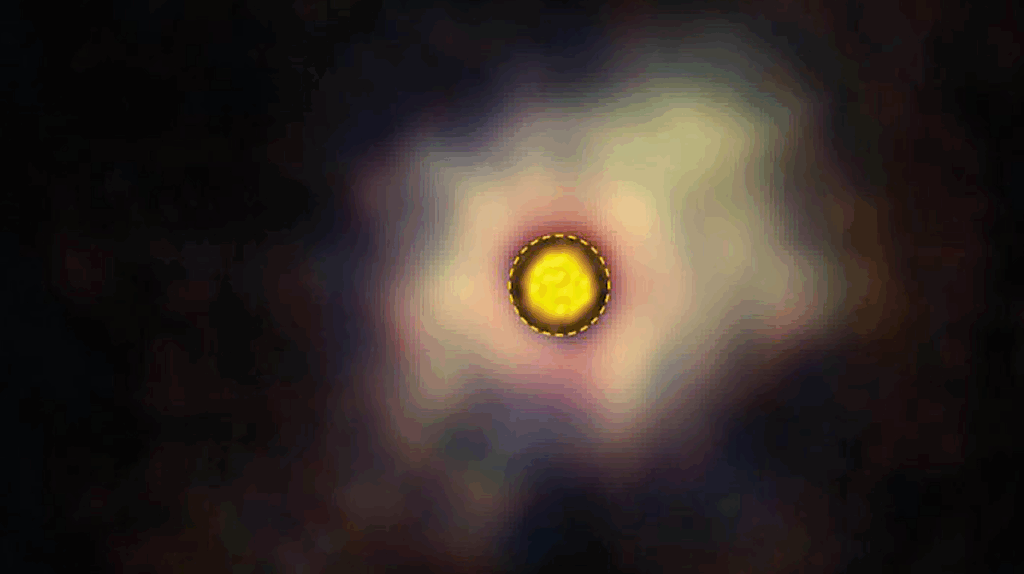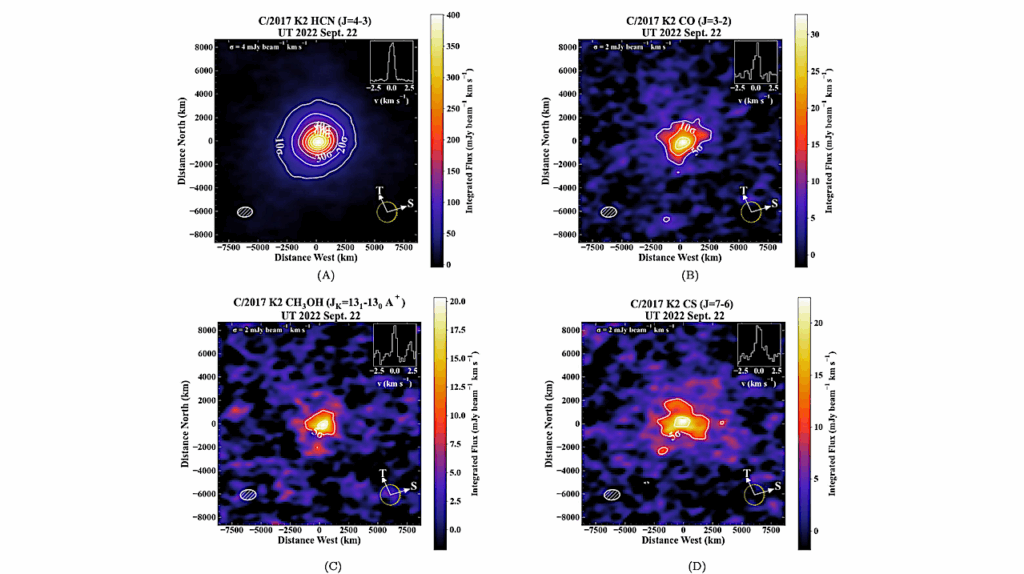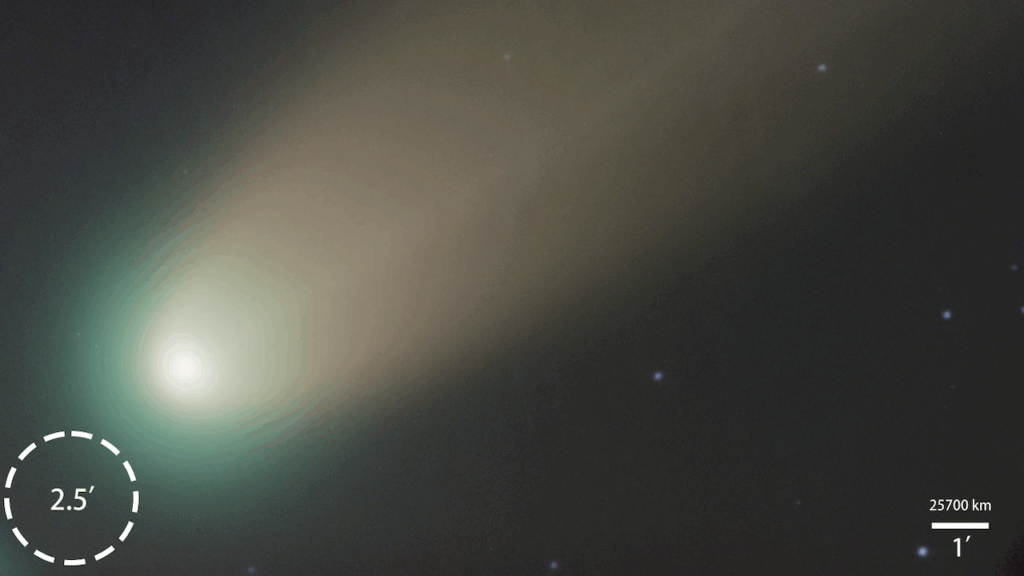Volatile Planetary Evolution and the Possibility of Life

In another step forward in the search for habitable planets, a team of researchers based out of the US and Chile announced that they have located a large swarm of comets and gas moving in a cloud around a nearby star.
That star is Beta Pictoris, located 63 light years from Earth. Thirty years ago, it was discovered that Beta Pictoris is surrounded by an enormous, asymmetric disk of dust. If our Sun had a similarly-sized disk, it would extend past all planets into the inner edge of the Oort cloud, some 1000 Astronomical Units away (1 AU being the distance between Earth and the Sun). The Oort cloud is believed to be the main source of comets in our solar system.
Like our own Oort cloud, it is believed that Beta Pictoris’ disk is filled with countless small bodies that range from several times the diameter of the moon to well below dust-grain size. Using the Atacama Large Millimeter/submillimeter Array (ALMA) in Chile, astronomers have observed an especially large object is sweeping up thousands of smaller bodies and gas, mostly carbon monoxide (CO), in its wake. This has lead to speculation about a possible planet in the disk.
“There are several tests we need to do before we can be 100% confident of the interpretation of the CO observations,” said co-author Dr. Mark Wyatt, “but the indications are positive that a planet will eventually be confirmed at this location.”
“The as-yet-unseen shepherding planet could be Saturn’s mass or larger,” said coauthor and NASA Goddard Researcher Aki Roberge. “The gravitational influence of the planet collects the comets into the swarm.” Through the eye of ALMA, the swarming planet-sized collection of comets and gas can be seen moving through Beta Pictoris’ dense dust disk at a distance from roughly three times that of Neptune from our Sun.
Several mysteries exist in this discovery, including how such a large amount of carbon monoxide gas can remain clustered over time. Without continuous replenishment, the observed cloud of carbon monoxide would dissipate within 100 years. One hypothesis is that the comets’ continuous destruction releases substantial amounts of carbon monoxide. A competing idea is that the cloud does not consist of one planet attracting thousands of smaller objects, but rather, is the remains of a massive collision. If two Mars-sized planets met head-on, both the cloud and the object or objects within could be the result of their mutual destruction.
In either case, because of its relative nearness, we can watch the planet-sized object around Beta Pictoris as it revolves and evolves. It will provide a never-before-seen perspective on planetary formation, and grant us novel insights into the challenges that life may face as it fights to form in early solar system. “The comets themselves are a possible source of water and other pre-biotic materials for smaller terrestrial planets closer to the star,” said Aki, “This may help us learn about delivery of pre-biotic material formed in cold outer reaches of disks to rocky planets in warm habitable zones.”
Sheyna E. Gifford, MD , Astrobiology Magazine



